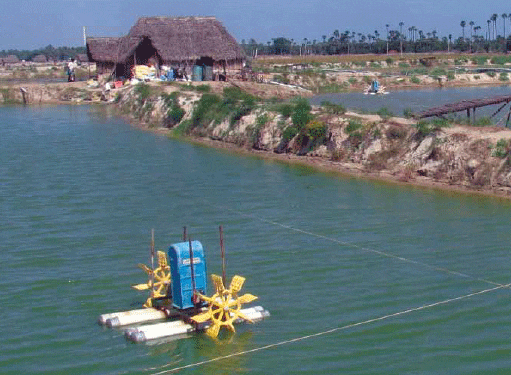
What has seafood certification got to do with the market for used cars? Well, strange as it may seem, the theoretical rationale for certification was established 40 years ago by the Nobel prizewinning economist George Akerlof when he published The Market for Lemons: Quality Uncertainty and the Market Mechanism. A lemon is American slang for a car that is found defective only after it has been bought.
Akerlof discussed “information asymmetry,” which occurs when sellers know more about a product than the buyers do. At the end of his analysis, he concluded that owners of good cars will not place their cars on the used car market. This is sometimes summarized as “the bad driving out the good” in the market Akerlof also identified one important solution: the use of quality guarantees or warranties, whereby traders offer certified used cars to keep the market going.
Superficially, a used car and a container of farmed seafood have little in common. But in both cases, and in the international trade for aquaculture products in general, there is certainly plenty of information asymmetry. Producers have a lot of information about the conditions under which their fish or shrimp were produced, but buyers may know next to nothing about a product’s safety, origins or environmental and social impacts.
This is one reason successful buyers place great importance on developing long-term, trusting relationships with their supply base, and often back this up with regular audits and independent certifications.
Building Trust
Consider a nightmare scenario in which seafood buyers are so nervous about the risk of buying defective seafood products that they simply stop trading. International seafood commerce would completely grind to a halt. Although this scenario may seem far-fetched, consider the crisis for farmed shrimp back in the 1990s, when the industry faced attacks regarding the abuse of antibiotics and mangrove damage. Poor practices and a lack of reliable information can threaten the viability of whole sectors of the seafood trade.
Today, the safety and environmental impacts of seafood are still critical concerns, but established inspection and certification programs – initially built around food safety and HACCP, but later incorporating environmental and social issues, too (Best Aquaculture Practices, GlobalGAP) – provide reliable, independent mechanisms for buyers to identify trustworthy products.
In this way, trade is not restricted to small cliques in which everybody knows everybody else. Third-party verification of the safety and environmental credentials of an aquaculture product counts for a lot. And although such certification programs do not come without costs, they add value, with producers and processors keen to signal to potential buyers that they meet rigorous, high standards.
Broad Assurance
So if people ask what aquaculture certification is all about, it’s useful to consider the work of Akerlof on how markets can freeze up when people don’t have confidence in what they are buying.
The proliferation of certification programs attests to the fact that key players see them as adding value. All the same, if there are too many programs, this can add unnecessary cost and cause confusion. In the longer term, there needs to be some convergence, with the surviving certification programs being those that deliver the most reliable assurances for the issues of greatest concern.
The Best Aquaculture Practices (BAP) program, for example, is designed to offer broad assurances covering environmental and social impacts, food safety, traceability and animal welfare. In contrast, programs such as that of the Aquaculture Stewardship Council restrict their coverage to environmental and social impacts, requiring the backup of other certificates for food safety and/or animal welfare.
Marketplace Acceptance
The marketplace, which originally identified the need for certification, will decide which certification programs prevail. Interestingly, following the same logic as Akerlof, the different seafood certification programs are themselves investing in signals to reassure the marketplace that they are well designed and effective.
For example, programs that cover food safety have been benchmarked to Global Food Safety Initiative guidelines. Programs that address environmental and social issues, and animal welfare are converging around the United Nations Food and Agriculture Organization Guidelines for Aquaculture Certification.
Safe And Sustainable
Consumers, retailers and the foodservice sector want assurance that seafood is safe to eat and has been produced in an environmentally and socially responsible way. Certification programs provide a means to fill this information gap.
So, in defense of voluntary certification programs, I would simply say “Don’t shoot the messenger!” Individual farmers who already behave responsibly may not see the immediate value in paying a third party to verify what they already do, especially if they have long-established links with buyers. However, to reach new and often distant markets and attract new business, independent guarantees of quality and environmental performance are a wise investment.
Taking a global perspective, such certifications actually help maintain healthy trade flows. On this basis, aquaculture certification helps producers get their products to market and is closely linked to the processes of building trust and branding. These days, few people doubt the value of brands, and certification is just an extension of branding.
March 2012

